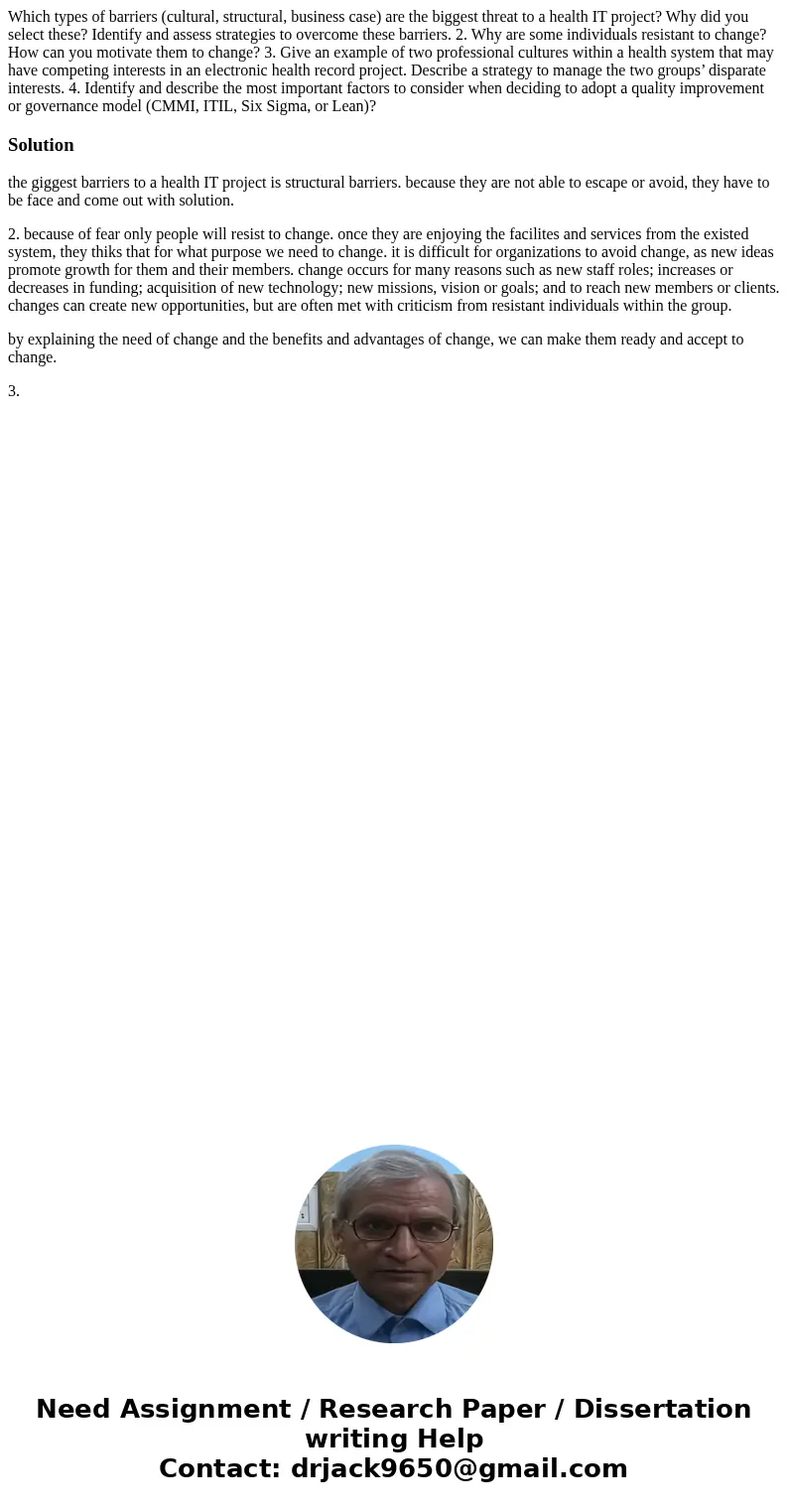Which types of barriers cultural structural business case ar
Which types of barriers (cultural, structural, business case) are the biggest threat to a health IT project? Why did you select these? Identify and assess strategies to overcome these barriers. 2. Why are some individuals resistant to change? How can you motivate them to change? 3. Give an example of two professional cultures within a health system that may have competing interests in an electronic health record project. Describe a strategy to manage the two groups’ disparate interests. 4. Identify and describe the most important factors to consider when deciding to adopt a quality improvement or governance model (CMMI, ITIL, Six Sigma, or Lean)?
Solution
the giggest barriers to a health IT project is structural barriers. because they are not able to escape or avoid, they have to be face and come out with solution.
2. because of fear only people will resist to change. once they are enjoying the facilites and services from the existed system, they thiks that for what purpose we need to change. it is difficult for organizations to avoid change, as new ideas promote growth for them and their members. change occurs for many reasons such as new staff roles; increases or decreases in funding; acquisition of new technology; new missions, vision or goals; and to reach new members or clients. changes can create new opportunities, but are often met with criticism from resistant individuals within the group.
by explaining the need of change and the benefits and advantages of change, we can make them ready and accept to change.
3.

 Homework Sourse
Homework Sourse